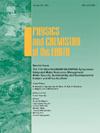Rural rooftop distributed photovoltaic systems (RRDPVS) play a crucial role in China's energy strategy to achieve sustainable development goals (SDGs). Over the past years, RRDPVS have experienced rapid development in China. This study focuses on identifying relevant factors and analyzing their influence on the growth of RRDPVS in Jiangsu Province. Based on county-level panel data spanning 39 months across 64 countries, an empirical model is built for analyzing the newly installed capacity of RRDPVS with the consideration of local natural resources and socio-economic conditions. It is a cross-disciplinary study in the field of economics and energy. In summary, natural resource factors have less influence and socio-economic factors have more influence on the newly installed capacity of RRDPVS at this stage. The results of regression models show that elements of natural endowment, such as solar resources, air temperature and air quality index PM2.5 have insignificant effects on the amount of newly installed capacity. The absence of government strategic guidance has resulted in the indiscriminate construction of RRDPVS in low-quality status. The results of the analyses from the socio-economic perspective show that most rural residents installed RRDPVS are the low-income group, whereas middle- and upper-income residents are less interested in installation. It is necessary to appropriately raise public awareness of the use of clean and low-carbon green energy, in order to expand the audience of RRDPVS and increase the penetration rate of the system among middle and high-income groups. The finding of this study offers insights into establishing a robust policy framework for renewable energy utilization to achieve SDGs, and promotes feasible solutions for the transformation of rural photovoltaics in China and other developing countries.


